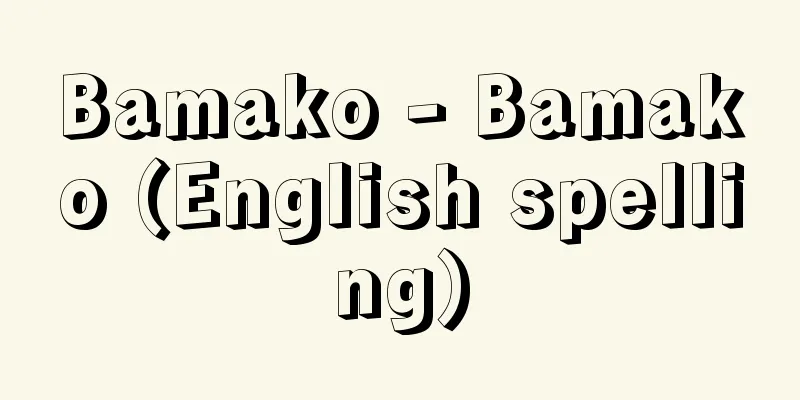Inshi - Inshi

|
Officials who served the retired emperor and his wife and handled the affairs of the Innouchi court. It began with the appointment of betto (head priests) to the Innouchi court under the retired emperor Saga in the early Heian period, and was greatly improved under the retired emperor Uda. By the time of the retired emperor Enyu, the main Innouchi organisation was almost complete, but after the start of the Insei system, the Innouchi court officials who handled government affairs were expanded and strengthened, becoming important pillars supporting the Insei system. As the Insei system declined, the Innouchi system also gradually shrank, but the main Innouchi court officials below betto continued to exist until the end of the Edo period. There are over twenty types of Innouchi court officials listed in the Shugaisho and Myomokusho, and they can be classified as follows based on their nature and function: (1) was the core of the Innosuke who oversaw the general affairs of the Imperial Court, and included In betto, Houdai, Shutendai, and Chokan. The betto was the head of the Innosuke and was in charge of all matters within the Imperial Court, but after the Insei period, when their number rose to around 20, Inshitsuji, Shikken, and Nenyo were placed among them and were made the de facto heads of the Imperial Court. (2) was responsible for all matters relating to the retired emperor, and included Kurodo, Hikurado, and Tenjobito. There are many examples where the term Innosuke is limited to the above (1) and (2). (3) was responsible for various duties, such as the Meshitsugi-dokoro (place of summons), Tsukaedokoro (place of office), Bechinousho (place of additional funds), Gofuku-dokoro (place of clothing), Mizushi-dokoro (place of kitchen), Gift-giving place, Fudono (place of literature), and Miumaya (place of stables). (4) was responsible for guarding the retired emperor's personal life, such as Mizuijin-dokoro (place of attendants), Musha-dokoro (place of warriors), and Kitamado (place of the north side). In addition, from the Kamakura period onwards, Hyōjōshū (council of councilors) and Tensō (councillors) were established to assist the retired emperor in his government affairs, and Fudono was given the role of hearing lawsuits under them. [Yoshihiko Hashimoto] [Reference] |Source: Shogakukan Encyclopedia Nipponica About Encyclopedia Nipponica Information | Legend |
|
上皇や女院に仕えて院中の諸務を処理する職員。平安初期嵯峨(さが)上皇の院中に別当(べっとう)を置いたのに始まり、宇多(うだ)上皇に至って大いに整備され、円融(えんゆう)上皇のときまでには、主要な院司の組織はほぼ成立を遂げたが、さらに院政開始後は、政務をとる上皇の院司は拡充強化され、院政を支える重要な柱となった。その後院政の衰退とともに、院司の機構もしだいに縮小したが、別当以下おもな院司は江戸末期まで存続した。『拾芥抄(しゅうがいしょう)』『名目抄(みょうもくしょう)』などに院司として列挙するものを数えると二十数種に上るが、それらは性格、機能のうえから次のように分類できる。(1)は院司の中核として院中の庶務を統轄処理するもので、院別当、判官代(ほうがんだい)、主典代(しゅてんだい)、庁官などである。別当は院司の上首として院中の諸事を総理する職であるが、その員数が20人前後に上った院政時代以降は、そのなかに院執事、執権、年預(ねんよ)を置き、院務掌理の実質的な責任者とした。(2)は上皇身辺の諸事に奉仕するもので、蔵人(くろうど)、非蔵人および殿上人(てんじょうびと)などである。院司の語を以上の(1)(2)に限定する用例も多い。(3)は各種の職掌を分担専当するもので、召次所(めしつぎどころ)、仕所(つかえどころ)、別納所(べちのうしょ)、御服所(ごふくどころ)、御厨子所(みずしどころ)、進物所、文殿(ふどの)、御厩(みうまや)などがある。(4)は上皇身辺の警固にあたるもので、御随身所(みずいじんどころ)、武者所、北面などである。そのほか鎌倉時代以降、上皇の政務を補佐するものとして評定衆(ひょうじょうしゅう)、伝奏(てんそう)が置かれ、文殿はそのもとで訴訟審理などの役割を与えられた。 [橋本義彦] [参照項目] |出典 小学館 日本大百科全書(ニッポニカ)日本大百科全書(ニッポニカ)について 情報 | 凡例 |
Recommend
Inabu [town] - Inabu
A former town in Higashikamo District, northeaster...
Kiyoshito - Kiyoshito
Year of death: 7/11/753 (8/14/753) Year of birth: ...
Ledesma Ramos, R.
… In August 1931, prior to the founding of the Fa...
atom-probe FIM
...In addition, the field evaporation method has ...
The Legend of Sasano's Famous Spears
There are also surviving shorthand versions of pop...
Bishamonten
A Buddhist guardian deity. The Sanskrit word Vaiś...
Mitsudae - Mitsudae
A technique used in ancient Japanese paintings. P...
Uganbishi
...The island is home to mountains such as Mt. Od...
Punch line - punch line
1. To fall. A decrease in rank or status. Fall &qu...
AT Feeding System - AT Feeding System
...On the other hand, with AC, the voltage can be...
The Imperialization Policy
A series of policies implemented mainly during the...
Rotating mirror high speed camera
...Like the next rotating mirror camera, the numb...
Hierarchical ownership
…It is also called condominium ownership or condo...
Sada [town] - Sada
A former town in Hikawa-gun, eastern Shimane Prefe...
Arrow worm - Arrow worm
A general term (illustration) for invertebrates be...









